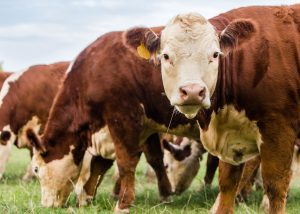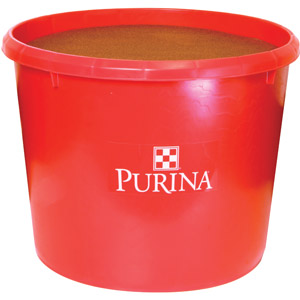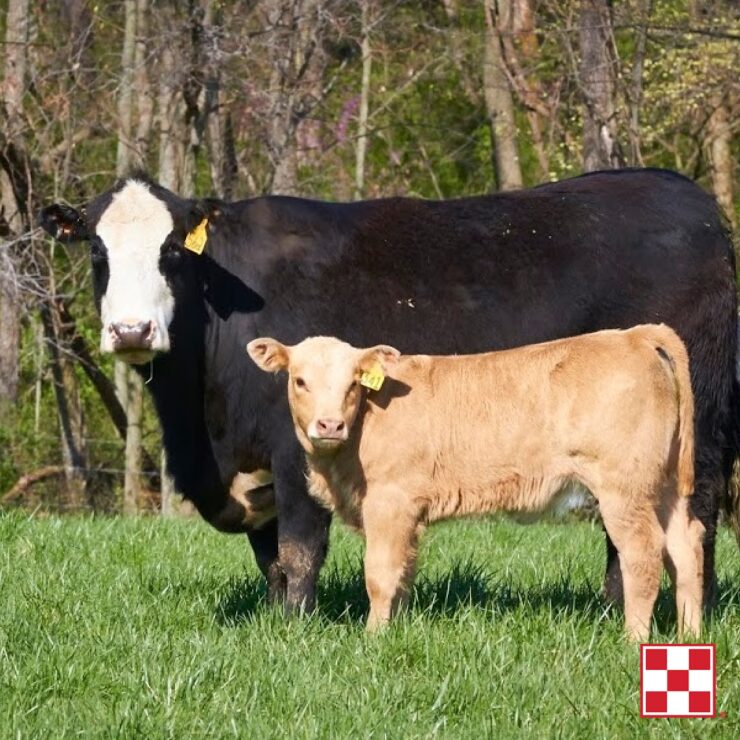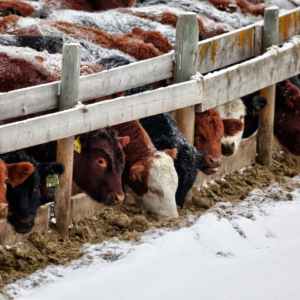 Avoid the summer pasture slump! The sight of fresh, green pastures as the summer months approach can be a welcome sight for many cattle producers. Especially after feeding costly forages throughout the winter.
Avoid the summer pasture slump! The sight of fresh, green pastures as the summer months approach can be a welcome sight for many cattle producers. Especially after feeding costly forages throughout the winter.
However, just as quickly as that green grass comes, the pasture quality can diminish. Subsequently, leaving both pasture and cows’ nutrient deficient.
These potential nutrient deficiencies come at a critical time frame when the cow likely has a calf at side. Most likely, the cow is either on target for re-breeding or is already re-bred and trying to grow her developing calf. Cattle nutrient requirements are high during this period. There are a few ways to prepare for a decline in pasture quality.
Forages mature as the summer goes on, losing nutrients, specifically protein, and allowing cows to lose body condition.
If forages are running under 7 percent protein, then you likely don’t have enough protein to support the cow and her calf. The majority of producers across the United States, unless they have some high-quality forages stockpiled, are not above that level and will need to find additional nutrient sources.
Additional nutrient sources:
Protein supplements can be used to help avoid this slip in condition. Especially late summer and into fall when cattle pasture grasses can be at their lowest nutrition value.
Adding protein tubs or blocks are two ways a producer can supplement their cow herd during this time of high nutrient requirements. Protein supplements can be fed from mid to late summer through mid-fall. During the winter months cubes can be added. This helps to meet energy requirements.
Protein supplements should be added before cattle start losing body condition. It pays to plan ahead for pastures that may become nutrient deficient. In most cases, pastures see a significant decline in nutrients in the August to September timeframe. Evaluating your pasture at various times throughout the summer, specifically mid- to late-summer, and adding a supplement before the pasture quality is too far diminished will help avoid a slip in body condition.
Protein deficiency may become a herd health challenge if pastures are not adequately managed. Symptoms include reduced intake and forage digestibility, reduced growth rate (both fetus and calf), loss of weight, inadequate intake of other nutrients, delayed estrus, irregular estrus, poor conception rate and reduced milk production.
It all narrows down to making sure your cows have what they need, when they need it. If they’re not getting the complete nutrition they need when the pasture is at its worst quality, you will likely see challenges develop.
These challenges may be easily avoided. Implementing a protein supplement program is the best way. Does your nutrition program stack up? Avoid the summer pasture slump by calling or visiting the Kissimmee Valley Feed Store #1 location. We are stocked with nutrients for your cattle.





 Come Rain or Shine: Altosid IGR Field Study – Much like the weather, fly populations can be a bit unpredictable during certain times of year. That’s often been the case with horn flies on pasture cattle. Populations have been known to rise after heavy rainfall events. This has created some mild concerns as producers question whether their feed-through fly control products are working effectively. To learn more,
Come Rain or Shine: Altosid IGR Field Study – Much like the weather, fly populations can be a bit unpredictable during certain times of year. That’s often been the case with horn flies on pasture cattle. Populations have been known to rise after heavy rainfall events. This has created some mild concerns as producers question whether their feed-through fly control products are working effectively. To learn more,  Cattle Mineral Tips for Spring: As winter shifts to spring, it’s time to take a look at cattle management. Specifically, your cattle mineral program. Make sure cattle management, and cattle mineral, reflect the season to help keep cattle performing year-round.
Cattle Mineral Tips for Spring: As winter shifts to spring, it’s time to take a look at cattle management. Specifically, your cattle mineral program. Make sure cattle management, and cattle mineral, reflect the season to help keep cattle performing year-round. Vaccinate Your Cattle This January: As we start a new year, it’s important for cattle farmers to start thinking about vaccinating their herds. Vaccinating your cattle is one of the most important things you can do to protect their health, and ultimately, your livelihood. Let’s explore why January is a good time to start thinking about vaccinating your cattle, what vaccines are available, and how to determine which vaccines are right for your herd.
Vaccinate Your Cattle This January: As we start a new year, it’s important for cattle farmers to start thinking about vaccinating their herds. Vaccinating your cattle is one of the most important things you can do to protect their health, and ultimately, your livelihood. Let’s explore why January is a good time to start thinking about vaccinating your cattle, what vaccines are available, and how to determine which vaccines are right for your herd. December marks the beginning of winter, which also means that it’s the perfect time to start thinking about supplementing your livestock’s diet. As temperatures drop, animals can struggle to maintain their weight, and their bodies require more energy to keep warm. This time of year, it’s crucial to make sure your animals are getting enough food and nutrients to stay healthy. That’s why December may be a good time to start supplementing their diets. What types of supplements should you consider and how can you ensure your animals are getting the proper nutrition they need?
December marks the beginning of winter, which also means that it’s the perfect time to start thinking about supplementing your livestock’s diet. As temperatures drop, animals can struggle to maintain their weight, and their bodies require more energy to keep warm. This time of year, it’s crucial to make sure your animals are getting enough food and nutrients to stay healthy. That’s why December may be a good time to start supplementing their diets. What types of supplements should you consider and how can you ensure your animals are getting the proper nutrition they need?